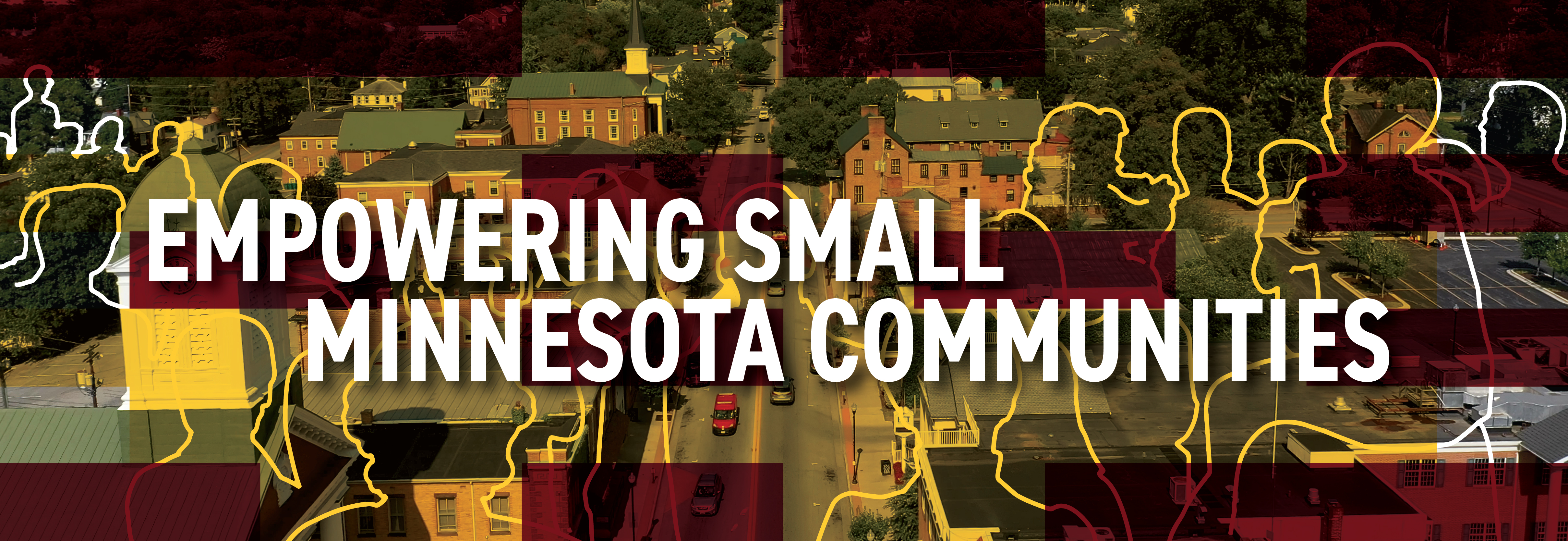
About Empowering Small Minnesota Communities
The Empowering Small Minnesota Communities (ESMC) program was established by the State of Minnesota during the 2023 legislative session (Chapter 68, Section 15) to support small Minnesota communities and local government units with added capacity to develop resilient, sustainable, and adaptable infrastructure projects. For the purposes of ESMC, small communities are defined as local jurisdictions of fewer than 15,000 people.
The program is collaboratively led by several University of Minnesota partners who will work directly with participating communities:
- Center for Transportation Studies
- U of M Extension Regional Sustainable Development Partnerships
- Minnesota Design Center
- Humphrey School of Public Affairs
- Center for Urban and Regional Affairs
Other researchers across the University will be engaged based on community needs.
Participation in ESMC is by application. Communities selected for partnership will work with the University to:
- Identify and embrace existing assets.
- Propose work that will advance resilient and sustainable economic, social, or transportation infrastructure.
- Proactively embrace projects or processes that may iterate new project ideas or frameworks for future development.
Communities that apply to ESMC will have an opportunity to identify and embrace existing assets; develop ideas that advance resilient and sustainable economic, social, or physical infrastructure; and explore and shape new ideas and visions for their communities now and into the future.
Vision
Small Minnesota communities develop resilient infrastructure while strengthening their social, environmental, and economic fabric.
Goals
To work with small Minnesota communities on efforts that add value to the community, get more benefit from local and state investments, are competitive projects for a wide range of future funding, and add capacity to support small communities in pursuit of their goals.
Approach
University of Minnesota researchers partner with communities to envision compelling proposal ideas for public and private funding programs. Program staff help navigate project planning processes. Community partners and University partners agree together on the plan.
Key Definitions
Small Community
For the purposes of the ESMC program, a small community is a Minnesota local jurisdiction of less than 15,000 people.
Infrastructure
Systems that are critical for the functioning of a community, region, and nation. Most often focused on physical systems such as transportation elements, water networks, broadband and other communications systems, energy systems, or housing. It can be a fully human-made system or mix natural and human-made elements together (i.e., green stormwater systems). Infrastructure can also be more community-oriented and focus on social networks and social capital. A less traditional form of infrastructure is seen in systems such as health care, education, and recreation, which encourage social connection and support vibrant, healthy living. Infrastructure can enhance growth and development of all kinds. Absence or poor condition of infrastructure can limit development and success. Infrastructure is usually cost-intensive, can take years to develop, and often has intensive maintenance requirements.
Resilience
The ability for a community, system, or infrastructure to absorb and bounce back from either an acute shock (such as extreme weather or economic collapse) or a longer-term stress (economic decline, climate change, population loss). In the case of traditional infrastructure, resilience may look like flexible elements, redundancies, or adaptive reuse of existing facilities. For soft infrastructure, such as community relationships and social networks, it may be the creation of systems that support recovery and connection.
Sustainability
Practices that encourage the creation, use/reuse, and ongoing stewardship of resources, land, and goods. In infrastructure, sustainability can mean design with natural elements or a combination of green/gray systems that provide both resilience and flexibility. Sustainability can also refer to the ability of a program or practice to have a path to ongoing performance and support.
Adaptation
The ability of infrastructure or a community to change or respond to shifting circumstances. For example, building a greenspace that enables multiple use cases and is able to create multiple benefits beyond daily recreation and greenspace conservation—such as being designed to absorb floodwaters or host a community resilience hub.